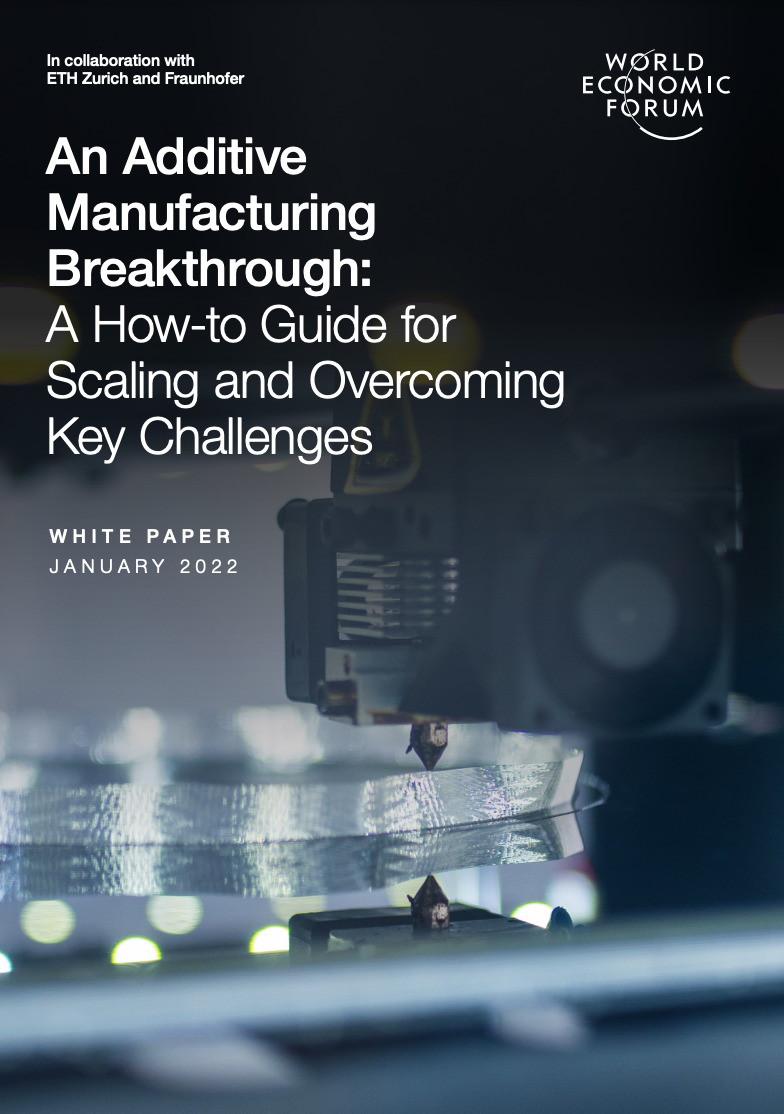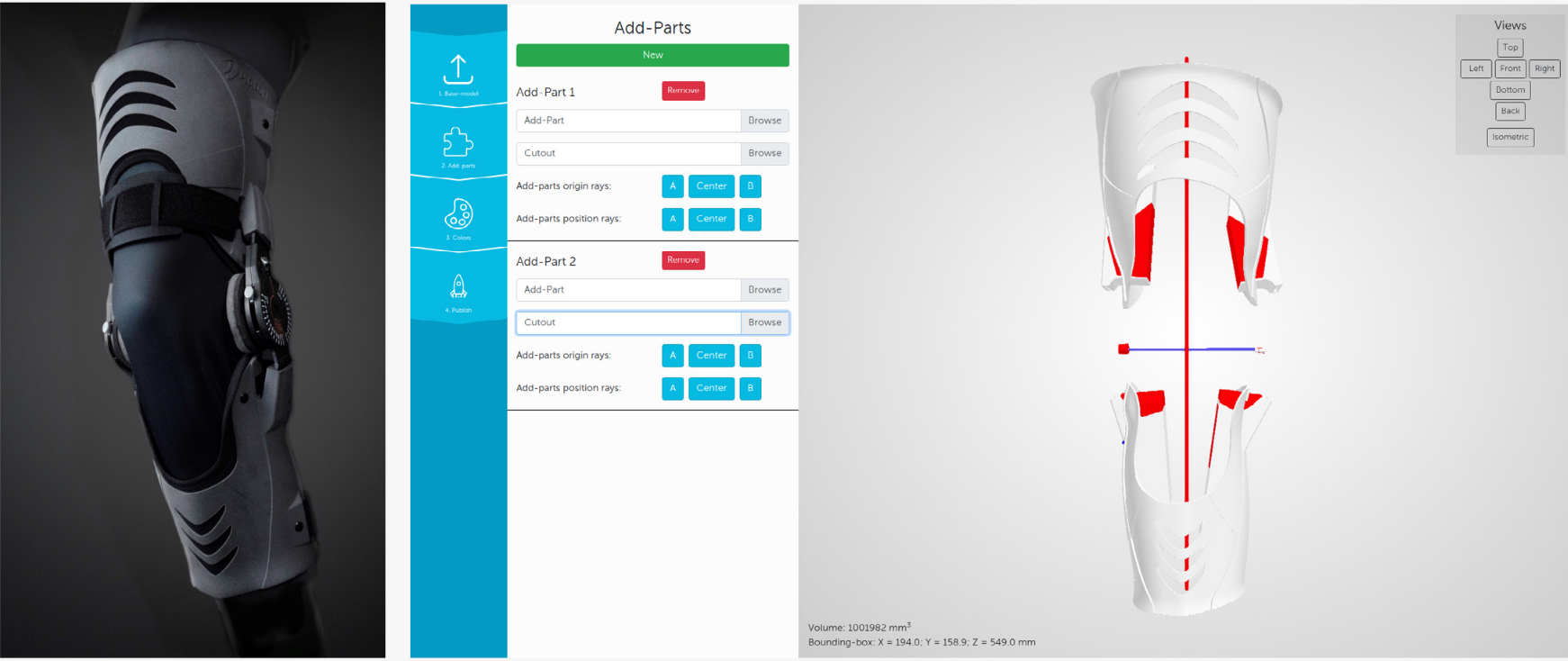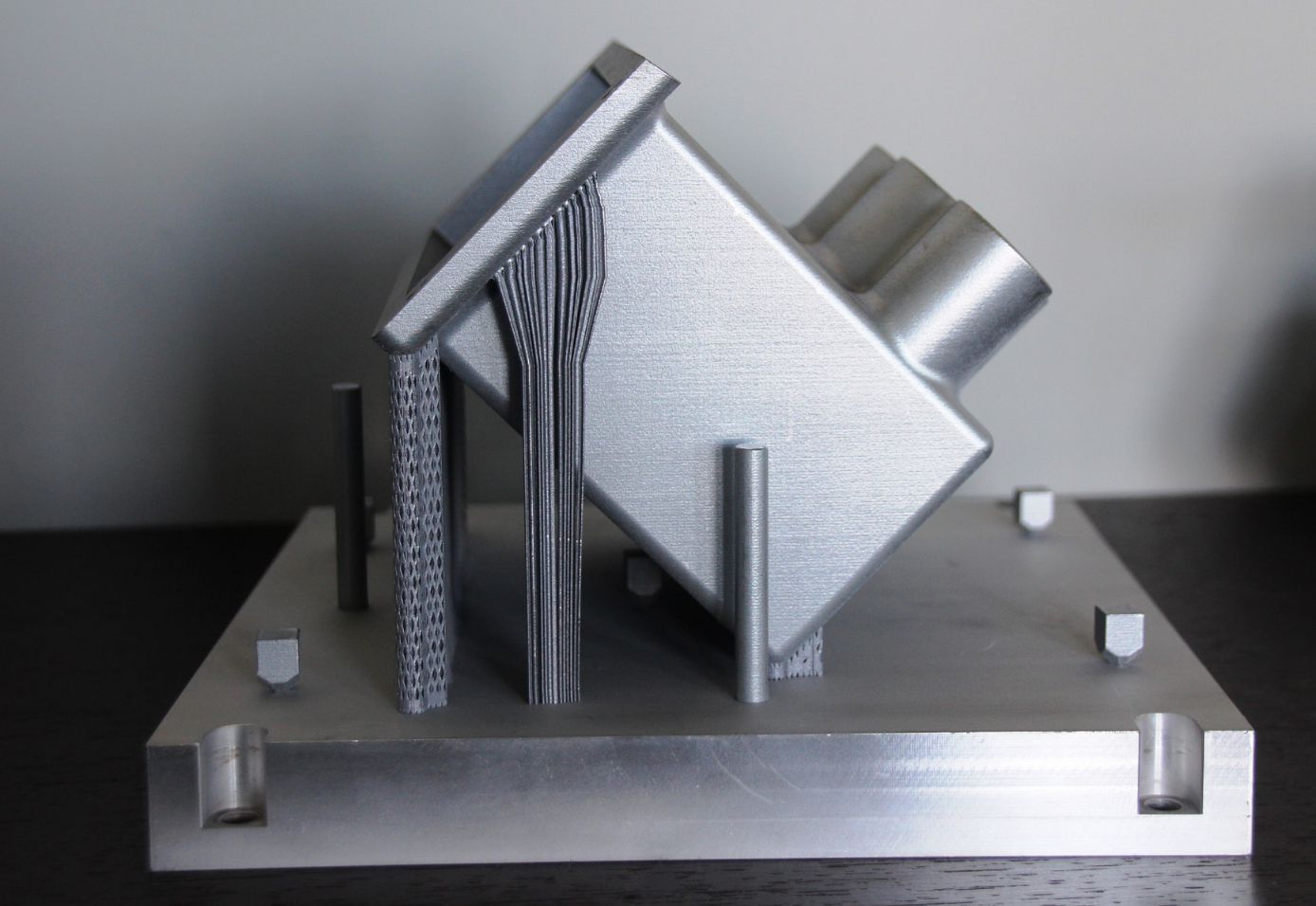A new free-to-download white paper from the World Economic Forum (WEF) predicts widespread, mass production of 3D printed industrial parts in the next decade and highlights the relationship between the coronavirus pandemic and the heightened use of additive manufacturing (AM) technologies. Targeting senior industry executives in manufacturing companies, the research titled “An Additive Manufacturing Breakthrough: A How-to Guide for Scaling and Overcoming Key Challenges” offers a realistic understanding of what AM can deliver today and why some are achieving that potential while others are not.
Developed in collaboration with ETH Zurich and three Fraunhofer research institutes (IGCV, IPT, and IAPT), this white paper highlights four best practices and three real-world case studies to show paths for overcoming the principal current challenges of AM. Charting the course for “the real story of AM” meant the WEF reached out to manufacturing leaders across different industries to define what it describes as a new “return on investment (ROI)-based narrative of the industrialization of AM.” Interviewees included AM experts in renowned companies like Stratasys, Nano Dimension, Spectroplast, HP, Carbon3D, and EOS.
WEF suggests that the best practices for the adoption of AM are:
Implement in iterations
Companies are advised to start the AM adoption process with applications of minimal complexity. Once completed, they can move to more advanced applications, gradually increasing their AM competence and level of adoption.
Pull, don’t push
The WEF recommends that to increase the likelihood of successful implementation; companies should build AM applications around its need. This market-pull strategy contrasts a technology-push approach, where organizations attempt to showcase AM’s technological capabilities in overly complex demonstrators while serving no or only limited business value. “The big hurdle in AM technology is no longer the technical feasibility but the cost-benefit ratio and finding a suitable business model,” states the white paper.
Collaborate to complement
One of the biggest AM adoption accelerators is collaborations that can help a company fill competence gaps or lack of expert skills and knowledge. In fact, throughout the paper, the WEF highlights that partnerships should be strengthened to reduce costs along the entire process chain. In fact, one of the aims of the paper is to help senior industry executives incubate new collaborations and partnerships by mobilizing the global manufacturing community.
Strategize and support
The WEF encourages businesses to create an AM strategy early on and align specific implementation projects with this roadmap while supporting the implementation to succeed.
To get to that point, though, the paper’s authors looked into three specific cases that reveal how AM challenges can be overcome. The examples chosen reveal that current key opportunity drivers can be found within the digital process chain, in new AM materials, in certified supply chains, and the application of novel business models. To show how the digital thread can be leveraged to improve AM applications, WEF chose an automated design platform for 3D printed orthoses developed by 3D printing software developer Trinckle and healthcare company Aqtor!
Another great example showcased in the paper is a novel material developed by Johnson & Johnson for highly innovative applications. The bioresorbable material blend based on polycaprolactone (PCL) creates patient-specific implants through selective laser sintering (SLS). With more than 90 implants successfully installed, this case study underlines the potential of novel AM materials and how they can provide vastly advanced AM applications with increased functionality and better availability at a competitive cost.
Finally, the WEF paper points out a case study between Central Europe’s largest railway company Deutsche Bahn (DB), and international service corporation TÜV SÜD. The duo teamed up to develop a certification scheme for suppliers of AM spare parts and end-use components to maintain passenger and cargo vehicles, ensuring the constant availability of spare parts. To date, more than 25,000 spare parts and end-use metal and plastic components have been manufactured at DB.
Aiming to help companies overcome any roadblocks along the AM value chain, the case studies and pointers offered by the authors of the paper reveal that current key opportunity drivers can be found within the digital process chain, in new AM materials, in certified supply chains, and the application of novel business models.
Additionally, the future industrialization of AM is discussed in relation to potential production scenarios, key enablers, and solutions. An overall analysis demonstrates that a joint step towards the industrialization of the AM process chain is required to foster sustained and sustainable growth of the industry. The report also spotlights seven overarching themes in a call to action, addressing detailed statements for stakeholders in the AM ecosystem to facilitate this process.
While the paper is upbeat about what companies can do to increase AM adoption, experts point out that today and in the foreseeable future, the production costs of AM parts are a principal obstacle.
“This not only refers to machine and material costs but that perceived lack of robustness and quality also have a significant impact on costs. Both factors lead to high quality-assurance costs after the AM process. Complex geometries of AM parts, small lot sizes, and other particularities of AM make it challenging to post-process and automate the production. As a result, post-processing accounts for a significant share of the overall part costs,” states the document.
Talking to so many industry experts to create a document like this is crucial due to its content and because the WEF is one of the most respected independent international organizations with worldwide reach. Ever since AM was highlighted as one of the WEF’s 10 emerging technologies by the organization’s Meta-Council on Emerging Technologies in 2015, it has been at the forefront of its agenda and other disrupting advanced manufacturing processes. This white paper is a great new starting point for the next generation of AM technologies in a global context altered by the Covid-19 pandemic. This new normal, where the future of manufacturing is moving away from traditional processes, has rendered AM a unique method that will help create more resilient and flexible supply chains.
Subscribe to Our Email Newsletter
Stay up-to-date on all the latest news from the 3D printing industry and receive information and offers from third party vendors.
Print Services
Upload your 3D Models and get them printed quickly and efficiently.
You May Also Like
The Dental Additive Manufacturing Market Could Nearly Double by 2033, According to AM Research
According to an AM Research report from 2024, the medical device industry, specifically in dentistry, prosthetics, and audiology, is expected to see significant growth as these segments continue to benefit from...
Heating Up: 3D Systems’ Scott Green Discusses 3D Printing’s Potential in the Data Center Industry
The relentless rise of NVIDIA, the steadily increasing pledges of major private and public investments in national infrastructure projects around the world, and the general cultural obsession with AI have...
AM Research Webinar Explores Continuum’s Sustainable Metal Additive Manufacturing Powders
Metal additive manufacturing (AM) powder supplier Continuum Powders is working to develop solutions that empower industries to reduce waste and optimize their resources. An independent life cycle assessment (LCA) of...
3D Printed Footwear Startup Koobz Lands $7.2M in Seed Round
California-based Koobz is focused on reshoring the U.S. footwear supply chain with advanced manufacturing processes, including 3D printing. The startup just announced that it has added $6 million to its...



































